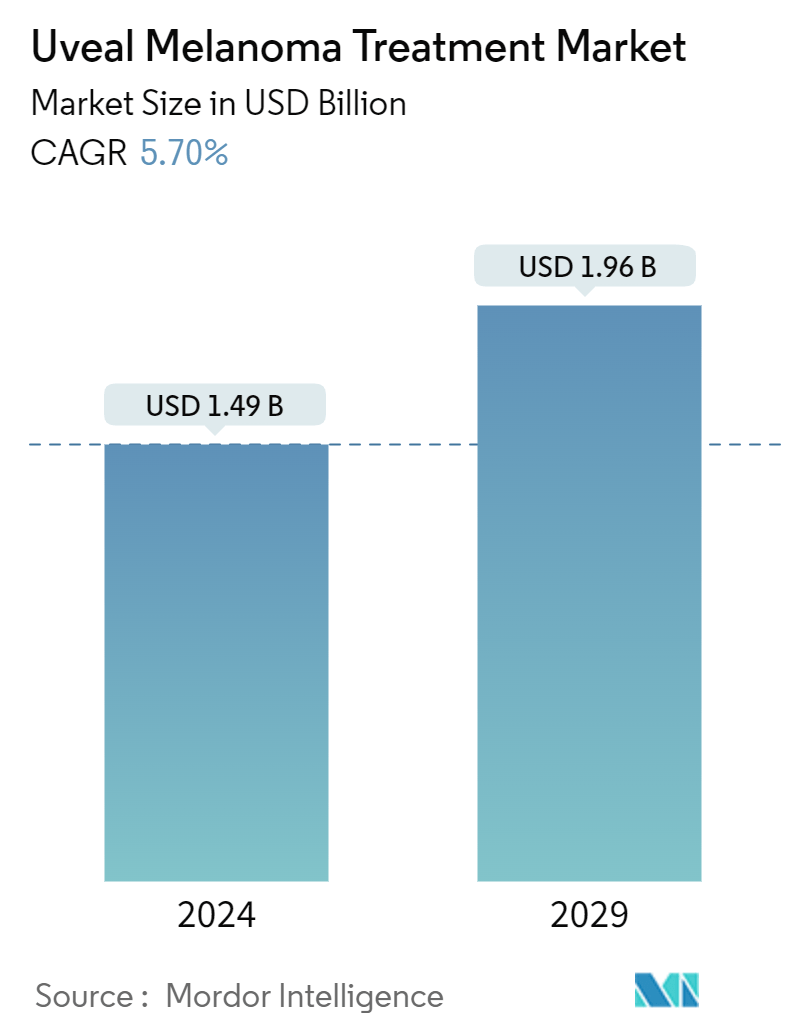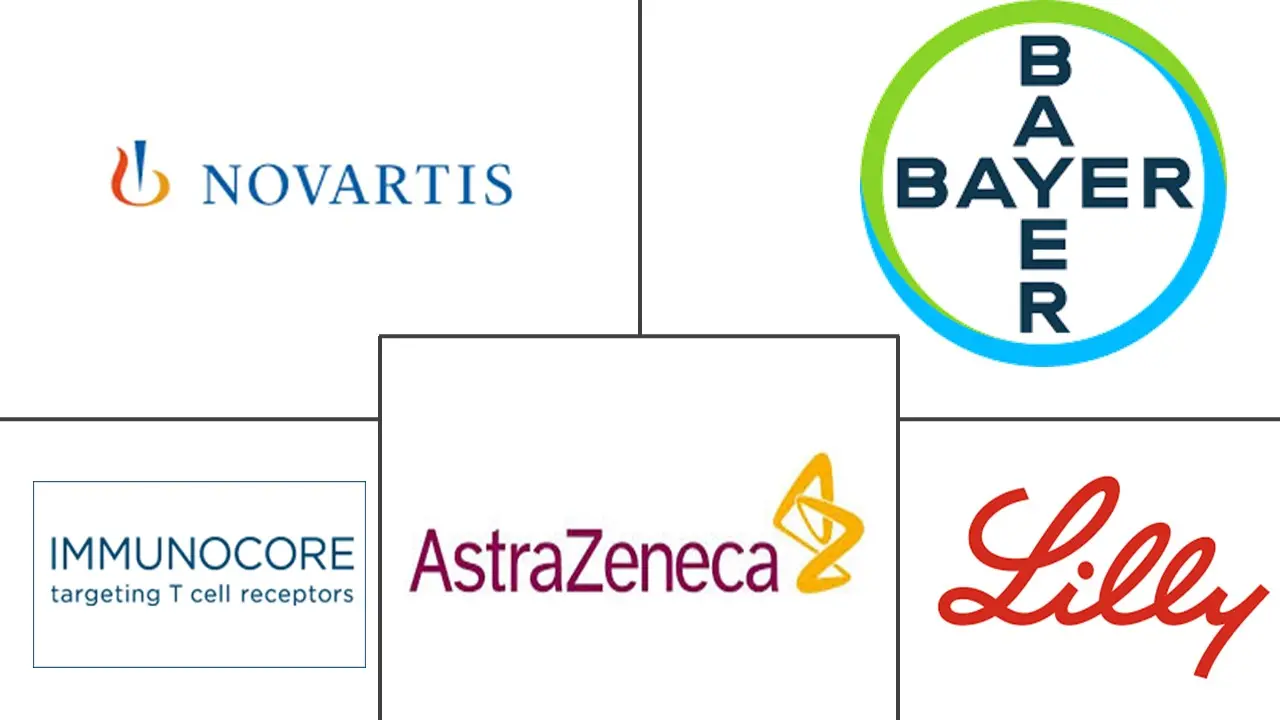Market Size of Uveal Melanoma Treatment Industry

| Study Period | 2019 - 2029 |
| Market Size (2024) | USD 1.49 Billion |
| Market Size (2029) | USD 1.96 Billion |
| CAGR (2024 - 2029) | 5.70 % |
| Fastest Growing Market | Asia Pacific |
| Largest Market | North America |
Major Players
*Disclaimer: Major Players sorted in no particular order |
Need a report that reflects how COVID-19 has impacted this market and its growth?
Uveal Melanoma Treatment Market Analysis
The Uveal Melanoma Treatment Market size is estimated at USD 1.49 billion in 2024, and is expected to reach USD 1.96 billion by 2029, growing at a CAGR of 5.70% during the forecast period (2024-2029).
Uveal melanoma is a rare and aggressive form of eye cancer that originates from the uveal tract, including the iris, ciliary body, and choroid. The rising geriatric population and a surge in eye cancer prevalence are expected to propel the market's growth in the coming years. The Centers for Disease Control and Prevention (CDC) publication on the United States Cancer Statistics in 2022 highlights the critical importance of monitoring cancer incidence rates.
Uveal melanoma, the most common primary intraocular cancer in adults, is estimated to affect 5.1 individuals per million annually in the United States. This data underscores the need for continued vigilance and targeted interventions to address this specific type of cancer. Uveal melanoma is frequently observed in older age groups, with its age-specific incidence rate steadily increasing and peaking around the age of 70, then stabilizing after 75 years. According to the World Health Organization 2022, the number of people aged 60 years and above is expected to reach 1.4 billion by 2030 and 2.1 billion by 2050. Thus, the surge in the geriatric population is expected to drive the growth of the uveal melanoma treatment market in the forthcoming years.
In addition, advancements in research and drug development are fueling the market's growth. A better understanding of the molecular and genetic biology of uveal melanoma has led to the development of targeted therapies. For instance, in April 2024, groundbreaking research from the University of Pittsburgh demonstrated that metastatic uveal melanoma can be effectively treated with adoptive therapy, which involves cultivating the patient's T cells outside the body before reinfusing them. This development is expected to significantly drive the uveal melanoma market by introducing a novel and promising treatment option. The success of adoptive therapy in clinical trials enhances the therapeutic landscape and attracts increased investment and research efforts, potentially leading to further advancements and expanded treatment options for patients with uveal melanoma. Furthermore, in October 2023, the US FDA granted approval to iOnctura to proceed with the clinical trial phase-I investigating Roginolisib (IOA-244) for the treatment of uveal melanoma.
Moreover, the increasing incidence of uveal melanoma, particularly in older populations, underscores the need for innovative and effective treatment options. As the global population ages, the number of individuals diagnosed with uveal melanoma is expected to rise, amplifying the demand for advanced therapies that can offer better outcomes with fewer side effects. Targeted therapies, with their ability to specifically attack cancer cells while sparing normal tissues, align well with the treatment needs of an aging population, who may be more susceptible to the adverse effects of conventional therapies.
However, the high cost of treatment and lack of skilled professionals are restraining the growth of the market during the forecast period.

